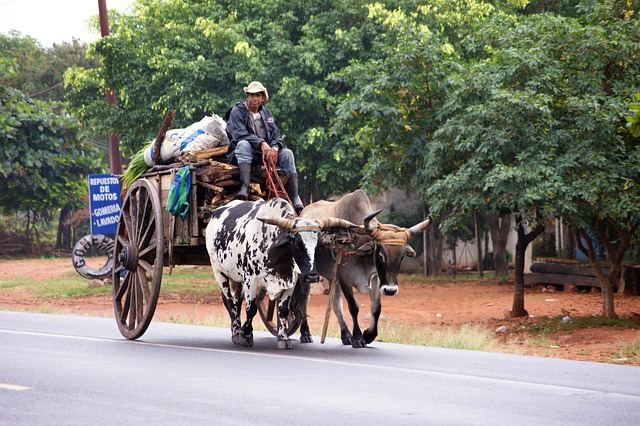When the Spanish viceroyalty of Rio de la Plata was abolished in South America in the 1820s, Paraguay rejected Argentine dominance by announcing its independence. Francia and Lopez, two dictators that ruled Paraguay successively, helped the country become progressive and rich. The people of Paraguay developed trade and cultural relations with Europe, ended slavery but did not practice peonage or feudalism, and had one of the highest rates of literacy on the continent. After the death of his father in 1862, Francisco Solano Lopez assumed leadership.
Lopez perceived a threat from Brazil's involvement in the civil war in Uruguay, a country next door, in 1864. Through Uruguay, landlocked Paraguay had access to the port city of Montevideo at the mouth of the Uruguay River. If a hostile government were to take office there, Paraguay would have to rely on Argentina's goodwill to permit access to the sea via Buenos Aires. When Lopez's objections against Brazilian meddling in Uruguay were met with indifference, he made the decision to use force by attacking the Brazilian province of Mato Grosso. The area was desolate and rugged, thus the attack had no impact. Lopez then requested passage through Argentina to help Uruguay, but Argentina's president, Bartolome Mitre, turned down the request.
On May 1st, 1865, the Triple Alliance of Brazil, Argentina, and Uruguay was established as a result of the attack. The alliance was required by a covert provision of the treaty to seize roughly half of Paraguayan territory and divide it between Brazil and Argentina. The force of the alliance of three countries—two of which are the biggest in South America—seemed overwhelming. Although the united coalition forces outnumbered the well-trained, 70,000-man Paraguayan army, Lopez was unable to advance with his invasion of Argentina and was soon on the defensive. In April 1866, Alliance troops crossed the Parana River and continued their advance.
There was no longer a rich, independent Paraguay. The conflict had decimated the population, leaving only 30,000 adult males in the country, with three-fourths of the 500,000 people dying in battle, illness, starvation, or the merciless Brazilian occupation. According to the terms set down at the founding of the Triple Alliance, Brazil and Argentina acquired over half of Paraguay and required the residents to make significant reparations. Former Paraguayan generals were used by Brazil to install a puppet administration, after which the nation's decades of progress were destroyed. Brazilian investors took control of the economy after the majority of the land was sold at incredibly low prices to international investors.
Not just Paraguay was impacted by the conflict. Argentina had to increase taxes to pay for its involvement, which during the conflict led to a number of provincial uprisings. Due to the Argentine government's preoccupation with quelling these uprisings, the country had all but abandoned the conflict by 1867.
But Brazil stuck to its word and gave half the compensation money and half the annexation land to Argentina.

References:
Keen, Benjamin, and Mark Wasserman, A
Short History of Latin America (Boston: Houghton
Mifflin, 1984); Warren, Harris, Paraguay and the
Triple Alliance (Austin, TX: Institute of Latin
American Studies, 1978); Williams, John, The
Rise and Fall of the Paraguayan Republic (Austin,
TX: Institute of Latin American Studies, 1979).
Posted using Proof of Brain
